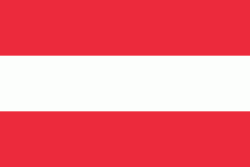Museum of Ethnology (Weltmuseum Wien)
The Weltmuseum Wien (former Museum of Ethnology) in Vienna is the largest anthropological museum in Austria, established in 1876. It currently resides in the Hofburg Imperial Palace and houses more than 400,000 ethnographical and archaeological objects from Asia, Africa, Oceania, and America. Since November 2014 the museum was closed due to renovation and was reopened on the 25th of October 2017.
The museum's collections comprise more than 200,000 ethnographic objects, 100,000 photographs and 146,000 printed works from all over the world. Important collections include Mexican artifacts, such as a unique Aztec feathered headdress; part of James Cook's collection of Polynesian and Northwest Coast art (purchased in 1806); numerous Benin bronzes; the collection of Charles von Hügel from India, Southeast Asia, and China; collections from the Austrian Brazil Expedition; artifacts collected during the circumnavigation of the globe by the SMS Novara; and two of the remaining rongorongo tablets.
The museum's most famous piece is a feathered headdress which tradition holds belonged to Moctezuma II, the Aztec emperor at the time of the Spanish Conquest. This has created friction between the Mexican and the Austrian governments. Originally taken as war booty by the Spanish in the 16th century, Austria acquired it from France in 1880.
The museum's collections comprise more than 200,000 ethnographic objects, 100,000 photographs and 146,000 printed works from all over the world. Important collections include Mexican artifacts, such as a unique Aztec feathered headdress; part of James Cook's collection of Polynesian and Northwest Coast art (purchased in 1806); numerous Benin bronzes; the collection of Charles von Hügel from India, Southeast Asia, and China; collections from the Austrian Brazil Expedition; artifacts collected during the circumnavigation of the globe by the SMS Novara; and two of the remaining rongorongo tablets.
The museum's most famous piece is a feathered headdress which tradition holds belonged to Moctezuma II, the Aztec emperor at the time of the Spanish Conquest. This has created friction between the Mexican and the Austrian governments. Originally taken as war booty by the Spanish in the 16th century, Austria acquired it from France in 1880.
Map - Museum of Ethnology (Weltmuseum Wien)
Map
Country - Austria
 |
 |
| Flag of Austria | |
Austria emerged from the remnants of the Eastern and Hungarian March at the end of the first millennium. Originally a margraviate of Bavaria, it developed into a duchy of the Holy Roman Empire in 1156 and was later made an archduchy in 1453. In the 16th century, Vienna began serving as the empire's administrative capital and Austria thus became the heartland of the Habsburg monarchy. After the dissolution of the Holy Roman Empire in 1806, Austria established its own empire, which became a great power and the dominant member of the German Confederation. The empire's defeat in the Austro-Prussian War of 1866 led to the end of the Confederation and paved the way for the establishment of Austria-Hungary a year later.
Currency / Language
| ISO | Currency | Symbol | Significant figures |
|---|---|---|---|
| EUR | Euro | € | 2 |
| ISO | Language |
|---|---|
| HR | Croatian language |
| DE | German language |
| HU | Hungarian language |
| SL | Slovene language |















